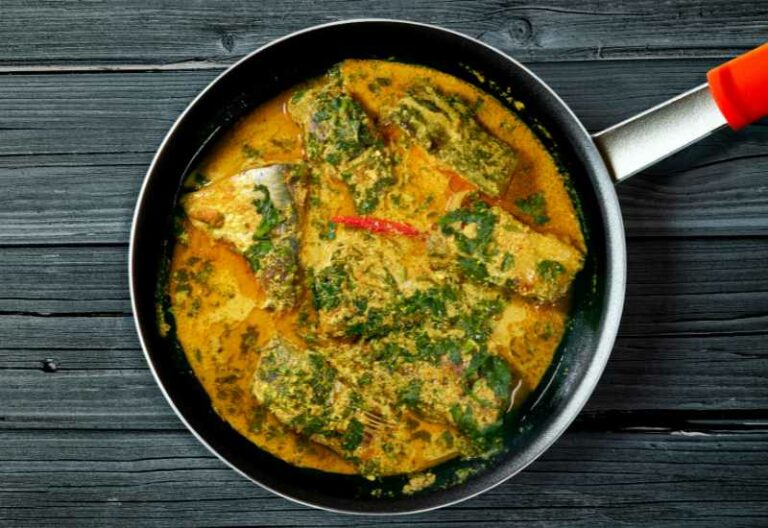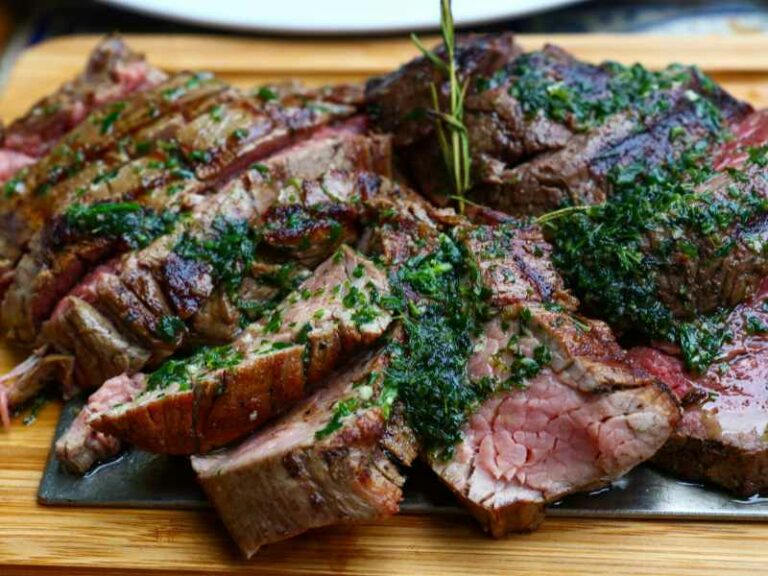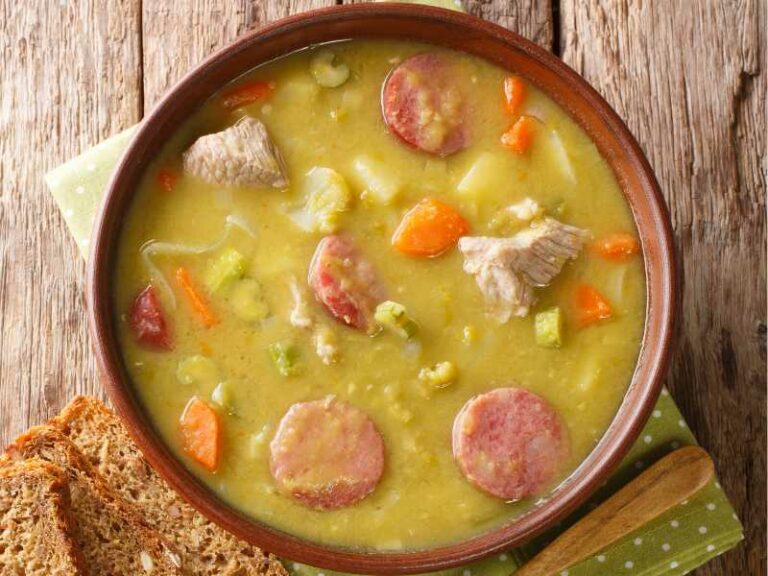Brazilian Acarajé with Vatapa Recipe

Acarajé is a traditional Brazilian stuffed fritter that is prepared using black eyed-peas, salt, pepper, and onions which, when combined, make the dough. This mixture is then shaped into a round disc and deep-fried in red palm oil. The disc is later split open, filled with shrimp, and topped with vatapá or caruru.
Vatapá is a traditional Afro-Brazilian dish prepared using bread, shrimp, coconut milk, finely ground peanuts and palm oil combined into a paste. It is generally accompanied by acarajé in the north-eastern state of Bahia, and in Candomblé it is consumed as a ritual offering served along with acaçá or acarajé.
Generally consumed with a fresh salad or with white rice, this Brazilian delicacy is especially popular in the region of Bahia where it is enjoyed as a street food.
Ground tuna, chicken or cod are some of the ingredients that are used as a substitute for the shrimp. Vatapá is also widely consumed in El Salvador and in the North and Northeast regions of Brazil.
History & Cultural Significance
Vatapá is originally from Africa, and was introduced to Brazil by the Yoruba people with the name of ehba-tápa. The dish displays the influence of African food on South America, brought by the Africans enslaved on slave ships beginning in the 16th century.
Brazilians later developed several other dishes using the ingredients found in the new land, which helped in the formation of typical Brazilian cuisine. The origination of acarajé took place during the colonial period of Brazil, and the recipe’s credit is given to the Nigerian slaves who first began selling it on the streets of Brazil. Today, acarajé serves as a perfect example of how African influences have impacted Brazil’s cultural heritage and its cuisine.
The real name of this dish is actually ‘acara’ but it is commonly known as ‘Acarajé’ as a result of a humorous mistake by the women from the Yoruba group who used to sell the snack. These women shouted ‘acara-jé’ which means ‘I have acara’ and so the name ‘Acarajé’ caught on.

Brazilian Acarajé with Vatapa Recipe
Acarajé is a traditional Brazilian stuffed fritter that is prepared using black eyed-peas, salt, pepper, and onions which, when combined, make the dough. This mixture is then shaped into a round disc and deep-fried in red palm oil. The disc is later split open, filled with shrimp, and topped with vatapá or caruru.
Ingredients
For the Acarajé:
- Black-eyed beans - 450g
- White onion (roughly chopped) - 450g
- Salt
- Dende oil - 360g
- Vegetable oil - 360g
For the vatapa
- Dried shrimp - 300g
- Bread (preferably a day-old and roughly cut into small pieces) - 330g
- Cashew nuts (unsalted) - 85g
- Peanuts (unsalted) - 85g
- A medium onion (roughly chopped) - 1
- Garlic cloves (finely chopped) - 2
- Fresh ginger (roughly chopped) - 2 tbsp
- Red chilli (finely chopped) - 1
- Coconut milk (unsweetened) - 840g
- Large tomato (roughly chopped) - 840g
- A handful of coriander (roughly chopped)
- Crab meat (cooked) - 250g
- Dende oil - 20g
- Salt
- Black pepper (freshly ground)
Instructions
- Begin by making the acarajé. Take a large bowl and add the beans to it. Pour water into the bowl and allow the beans to soak overnight or for 24 hours.
- While the beans are still in water, lightly rub them between your hands in such a way that the outer skins start to come off and they begin floating on the surface. Get rid of the skins and discard them. Drain the water.
- Take the beans and soak them in water again. The repetition of the process helps in getting rid of all the extra skins.
- Once done, take the beans and throw them in a food processor along with the raw onions. Make sure to do this in batches for better results.
- Now, take a large mixing bowl and transfer the prepared mixture to the bowl. Season with salt. The next step is to beat the mixture using a wooden spoon for a couple of minutes, until it tends to become light and fluffy.
- Take a large, deep pan and add the dende oil and vegetable oil to it. Heat the oil. Take the freshly prepared batter and form them into balls using a wooden spoon and gently add them to the hot oil in small batches. Allow them to cook. It should take you about 6 minutes (or 3-4 minutes on each side). You’ll know that they’re completely cooked once they turn bright orange in colour and are crunchy on the outside.
- Once done, take them out of the oil and keep them aside on a kitchen towel to cool.
- Meanwhile, prepare the vatapa filling. Begin by placing the shrimp in a food processor, blitzing to a pulp and then setting it aside once done. Next, place the bread in the food processor, blitz until it smoothens, and then throw in the cashews and peanuts. Blitz more for the next 2 minutes, then take the mixture out and keep it aside.
- Take a large pan and add the dende oil to it. Heat it over a medium-high flame and add the onions, garlic, ginger and chillies and let them cook for about 2-3 minutes until they’re tender but not colored.
- Next, add the freshly prepared pulped shrimp, coconut milk, tomato and breadcrumb mixture. Let it cook for another 5 minutes.
- Season it with salt and pepper, and add the crab meat at the end to let it warm through. Throw in some coriander and stir. Once prepared, keep the mixture aside.
- Carefully, split open the acaraje across the longest side and place some of the vatapa in every acaraje. Serve instantly.
Nutrition Information:
Yield: 12 Serving Size: 1Amount Per Serving: Calories: 1016Total Fat: 88gSaturated Fat: 20gTrans Fat: 1gUnsaturated Fat: 63gCholesterol: 81mgSodium: 942mgCarbohydrates: 40gFiber: 5gSugar: 10gProtein: 23g






